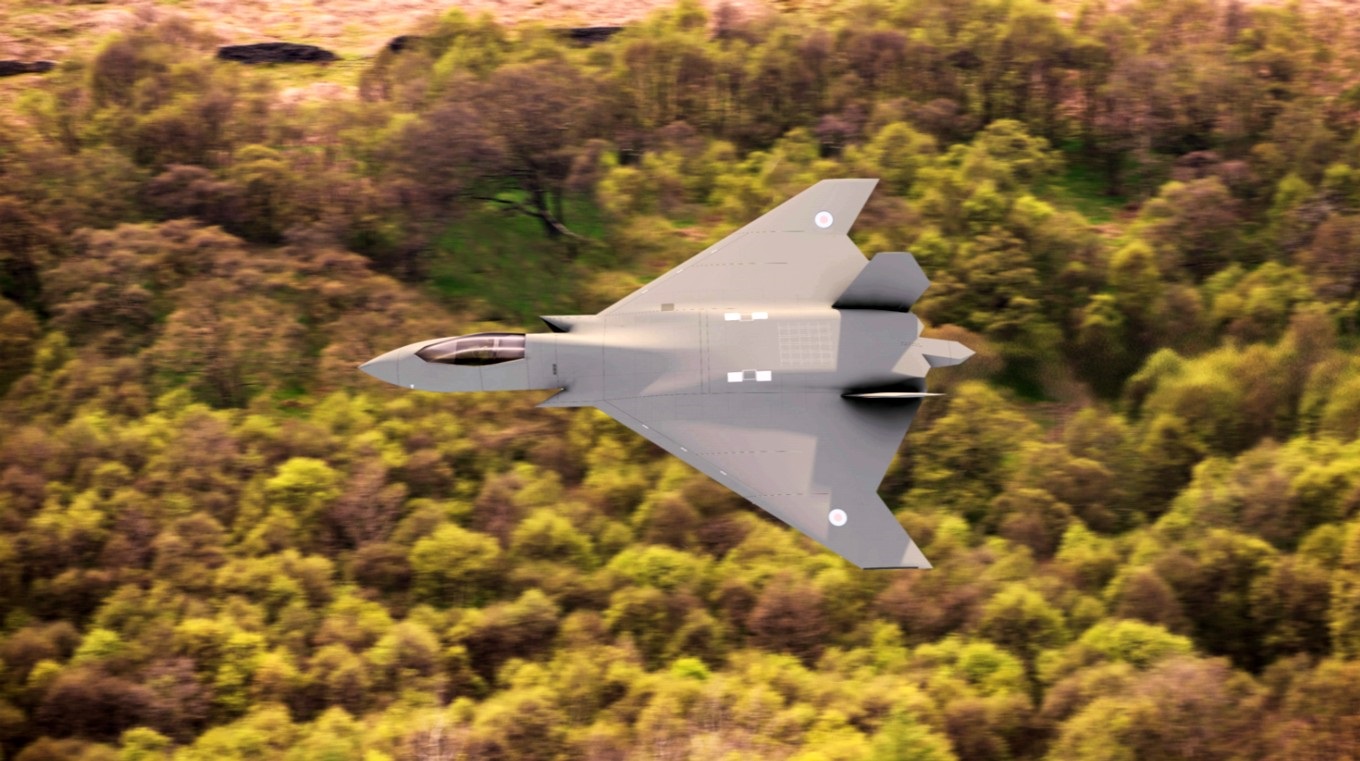At Farnborough International Airshow, Leonardo UK and Mitsubishi Electric have announced that they have agreed the concept for a radar tech demonstrator called JAGUAR, first unveiled in February. The move by the UK and Japan’s respective champions in combat air electronics follows the completion of joint concept work and feasibility studies earlier this year. Information advantage: JAGUAR represents the very latest in combat air sensing technology and will provide enhanced radar functions as well as advanced new capabilities that can disrupt and deny adversary surveillance systems. The partners have agreed Jaguar workshare and both Leonardo UK and Mitsubishi Electric have signed contracts with their respective national defence ministries in order to progress development work.
The project is now proceeding at pace, in line with Leonardo’s broader approach to Future Combat Air System (FCAS) partnerships, where close collaboration is supported by agile decision-making and a transformational ethos imported from Silicon Valley. JAGUAR represents the first big building block of an international radar programme that meets the ambitions laid out by Japan and the UK as part of F-X/FCAS discussions. Technology and learnings generated by JAGUAR work will feed into the development of Tempest’s ISANKE & ICS (Integrated Sensing and Non-Kinetic Effects & Integrated Communications System).
ISANKE is a ‘spider’s web’ of capability that sits across an aircraft, unlocking the potential of sixth generation sensors by moving from distinct pieces of equipment to integrated systems, while ICS connects the ISANKE system into the wider FCAS system-of-systems. The relationship between Leonardo UK and Mitsubishi Electric has been deepening for several years and the partners have been exploring the feasibility of further ISANKE-related sub-systems collaboration throughout 2022. In December 2021 Japan and the UK signed a Memorandum of Cooperation around fighter technologies. The international partners are exploring the scope for collaboration on the core platform, the fighter jet at the heart of the combat air system.
A new flying demonstrator will be unveiled within the next five years as part of the UK’s major next generation fighter aircraft programme, the Future Combat Air System (FCAS). It comes as the future combat air programme launches a new recruitment and skills initiative known as Generation Tempest, set to create thousands of new job opportunities across the United Kingdom. The demonstrator aircraft is already in development between the Government and Team Tempest industry partners and the UK is actively progressing collaboration opportunities on the project with Italian industry partners. This is the first time the UK will have developed a new fast aircraft using 21st century technology.
The UK Ministry of Defence has also listed some of the efforts of ‘Team Tempest’ so far.
Rolls-Royce Defence has delivered a new gas turbine demonstrator engine, known as Orpheus, designed, built and tested in under two years to prove innovative technology developments for FCAS. Working with international partners, Rolls Royce have also agreed the next stage of the full-scale engine demonstrator programme.
BAE Systems has used digital transformation to design and build a representative military fast jet fuselage, demonstrating how innovative technologies can transform the design and manufacturing capability for Tempest. Commercial robots were adapted and utilised, and 65% of the parts were guided into location using automation.
Leonardo UK and Japan’s Mitsubishi Electric have agreed the concept for a radar technology demonstrator called JAGUAR, first unveiled in February, following the completion of joint concept work and feasibility studies earlier this year.
Leonardo has also revealed ongoing bilateral work to support the future electronics on-board the FCAS programme. Leonardo in the UK and in Italy are working together on a number of projects with Elettronica in Italy including joint assessment of potential architecture of a common Integrated Sensing and Non-Kinetic Effects (ISANKE) and Integrated Communications System. The work is complementary to ongoing collaboration with Japan on 6th generation sensor capabilities, an area in which Italy will soon be involved. MBDA unveiled its concept for a weapon effects management system, to aid the coordination of all available weapons in the battle space using Artificial Intelligence and Machine Learning enhanced software.















